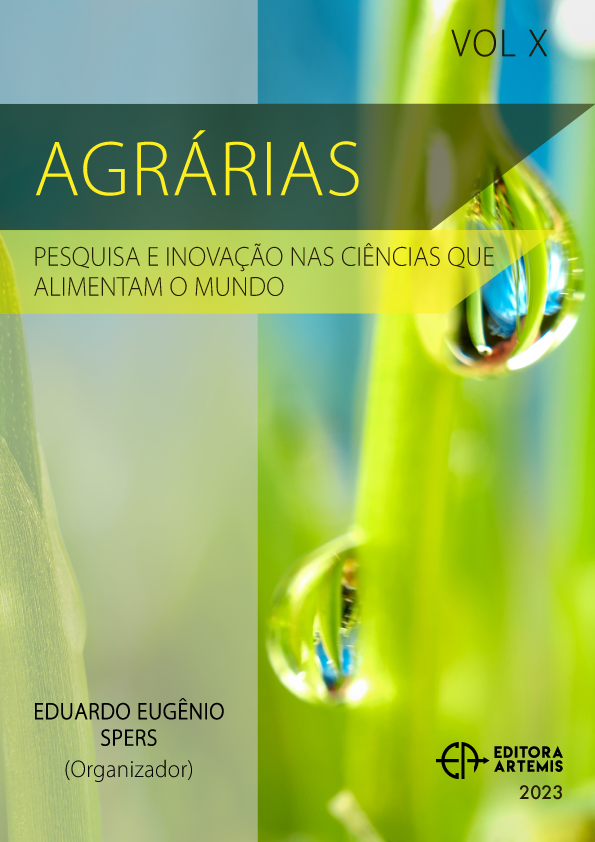
HIDROGELES DE QUITOSANO Y POLIACRILAMIDA SOBRE LAS PROPIEDADES EDÁFICAS Y EL CRECIMIENTO DE Lupinus exaltatus
Una alternativa para rehabilitar suelos degradados es el uso de hidrogeles, lo que permite mantener la humedad en el suelo. El objetivo del trabajo consistió en evaluar un hidrogel a base de quitosano y uno comercial de poliacrilamida sobre las propiedades del suelo y variables de crecimiento de la leguminosa Lupinus exaltatus. Se realizó la preparación del hidrogel de quitosano y posteriormente junto con el de poliacrilamida se verificó que el hidrogel de quitosano absorbió 117 % de agua y el de poliacrilamida 144 %. Posteriormente, se estableció un diseño experimental en bloques al azar con un arreglo factorial 2 × 4, dos tipos de hidrogel (quitosano y poliacrilamida) y cuatro dosis (0, 1.5, 3 y 4.5 g kg -1 ) y la leguminosa L. exaltatus. A los 90 días se trasplantó la planta de acuerdo con el diseño experimental, al término, a los 161 días, se determinaron las propiedades físicas, químicas y biológicas en suelo y en planta se evalúo la supervivencia, altura de planta, volumen radical, número de nódulos y biomasa seca. Los resultados mostraron que la densidad aparente disminuyó y por consecuencia aumentó la porosidad a una dosis de quitosano de 3 g kg -1 , el pH se mantuvo como moderadamente ácido, la materia orgánica tuvo un valor mayor con 4.5 g kg -1 , así mismo la actividad microbiana, dada su condición orgánica de este hidrogel. El N total no tuvo una variación en los diferentes tratamientos, no así en fósforo. Al evaluar las variables de crecimiento de L. exaltatus si bien no existieron diferencias significativas entre tipo de hidrogel y dosis, se puede mencionar que el empleo de quitosano en dosis de 3 y 4.5 g kg -1 favoreció el establecimiento de esta leguminosa, lo que permite que este hidrogel sea empleado en prácticas de rehabilitación de suelos degradados.
HIDROGELES DE QUITOSANO Y POLIACRILAMIDA SOBRE LAS PROPIEDADES EDÁFICAS Y EL CRECIMIENTO DE Lupinus exaltatus
-
DOI: 10.37572/EdArt_3011230551
-
Palavras-chave: Polímero natural, Polímero sintético, Quitina, Leguminosas, Conservación del suelo.
-
Keywords: Natural polymer, Synthetic polymer, Chitin, Legumes, Soil conservation.
-
Abstract:
An alternative to rehabilitate degraded soils is the use of hydrogels, which allows maintaining soil moisture. The objective of this work was to evaluate a chitosan-based hydrogel and a commercial polyacrylamide hydrogel on soil properties and growth variables of the legume Lupinus exaltatus. The chitosan hydrogel was prepared and then, together with the polyacrylamide hydrogel, it was verified that the chitosan hydrogel absorbed 117 % of water and the polyacrylamide hydrogel 144 %. Subsequently, a randomized block experimental design was established with a 2 × 4 factorial arrangement, two types of hydrogel (chitosan and polyacrylamide) and four doses (0, 1.5, 3 and 4.5 g kg -1 ) and the legume L. exaltatus. At 90 days, the plant was transplanted according to the experimental design, and at the end, at 161 days, the physical, chemical and biological properties were determined in soil and in plant survival, plant height, root volume, number of nodules and dry biomass were evaluated. The results showed that bulk density decreased and consequently porosity increased at a chitosan dose of 3 g kg -1 , pH remained moderately acidic, organic matter had a higher value at 4.5 g kg -1 , as well as microbial activity, given the organic condition of this hydrogel. Total N did not vary in the different treatments, but phosphorus did not. When evaluating the growth variables of L. exaltatus, although there were no significant differences between hydrogel type and dose, it can be mentioned that the use of chitosan in doses of 3 and 4.5 g kg -1 favored the establishment of this legume, which allows this hydrogel to be used in rehabilitation practices of degraded soils.
-
Número de páginas: 13
- Elizabeth García Gallegos
- Néstor Gutiérrez Pérez
- Oscar Gumersindo Vázquez Cuecuecha
- Elizabeth Hernández Acosta

